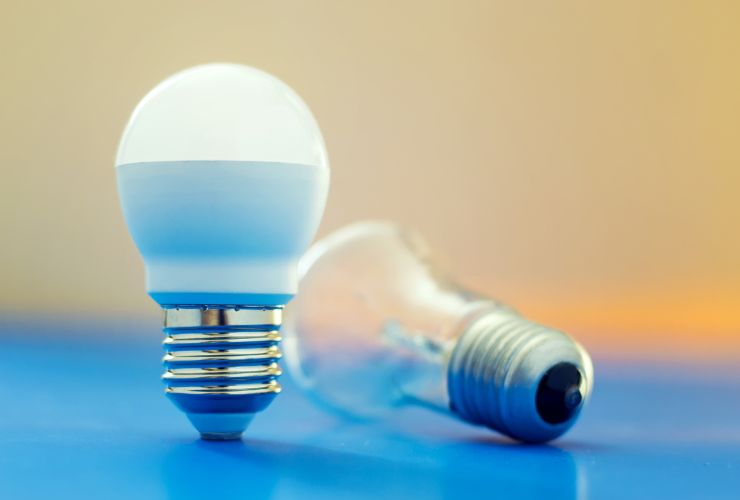LED vs. Incandescent vs. CFL: Which Lighting Option Is Best for You?
TLDR: When it comes to choosing the right lighting for your home, LED bulbs shine as the top choice due to their outstanding energy efficiency, durability, and instant brightness. Incandescent bulbs, although emitting a warm and familiar light, are inefficient and have a short lifespan. CFL bulbs offer energy savings but have drawbacks like warm-up time and a shorter lifespan compared to LEDs. The choice between these lighting options depends on your priorities, but making the switch to LED technology is a step toward greater energy efficiency and sustainability.
Choosing the right lighting for your home can significantly impact energy efficiency, visual comfort, and even your monthly electricity bills. With the advancement of lighting technology, you now have various options to choose from, with three popular choices being LED, incandescent, and CFL (Compact Fluorescent Lamp) bulbs. In this comprehensive guide, we will compare these lighting options, highlighting their strengths and weaknesses, so you can make an informed decision on the best lighting for your needs.

LED Lighting: Efficiency and Longevity
LED (Light Emitting Diode) lighting has gained immense popularity in recent years for several compelling reasons. LEDs are highly energy-efficient and have a remarkably long lifespan, making them an excellent choice for both residential and commercial settings.
- Energy Efficiency: LEDs are known for their exceptional energy efficiency. They use significantly less electricity than incandescent and CFL bulbs to produce the same amount of light. This means lower energy bills and reduced environmental impact. LED bulbs are perfect for everyday lighting needs, such as task lighting in kitchens, reading lamps, or outdoor fixtures.
- Longevity: LED bulbs are built to last. They can provide illumination for up to 25,000 hours or more, which is substantially longer than incandescent or CFL bulbs. This extended lifespan reduces the frequency of bulb replacements, saving you money and reducing waste.
- Durability: LEDs are solid-state lighting devices, making them more robust and less prone to damage from shocks or vibrations. They are an ideal choice for areas where bulbs may be exposed to rough handling or environmental stressors.
- Instant Full Brightness: Unlike CFLs, LEDs reach full brightness instantly when turned on, without any warm-up time. This feature is particularly useful in spaces where immediate illumination is required.
Incandescent Lighting: Traditional but Inefficient
Incandescent bulbs are the traditional lighting choice, but their popularity has waned due to their inefficiency and relatively short lifespan.
- Warm and Familiar Light: Incandescent bulbs emit a warm, soft light that many find comfortable and familiar. They produce a color spectrum similar to natural sunlight, making them a preferred choice for certain applications, such as reading or decorative lighting.
- Affordability: Incandescent bulbs are typically less expensive upfront than LEDs. However, their lower energy efficiency means higher electricity bills over time, which may outweigh the initial cost savings.
- Short Lifespan: Incandescent bulbs have a relatively short lifespan compared to LEDs and CFLs, typically lasting around 1,000 hours. This means you’ll need to replace them more frequently, which can be inconvenient and less cost-effective in the long run.
CFL Lighting: Energy Efficiency with Some Drawbacks
CFL bulbs were once considered a more energy-efficient alternative to incandescents, but they have some limitations that have led many consumers to switch to LEDs.
- Energy Efficiency: CFL bulbs are more energy-efficient than incandescents but slightly less so than LEDs. They use about 70-80% less energy than traditional bulbs, which can result in noticeable energy savings.
- Lifespan: CFLs have a longer lifespan compared to incandescents, typically lasting around 8,000-10,000 hours. While this is better than incandescents, it’s still significantly shorter than LED bulbs.
- Warm-Up Time: CFL bulbs may take a moment to reach full brightness after being turned on, which can be less convenient in situations where immediate illumination is needed.
FAQs About Lighting Options
Are LED bulbs more expensive than incandescents and CFLs?
LED bulbs typically have a higher upfront cost compared to incandescent bulbs but are more affordable than CFLs in the long run due to their energy efficiency and longer lifespan.
Can LED bulbs be used with dimmer switches?
Many LED bulbs are dimmable, but it’s essential to check the product label or description to ensure compatibility with your specific dimmer switch. Some older dimmer switches may not work well with LED bulbs.
Do CFL bulbs contain mercury, and are they recyclable?
CFL bulbs do contain a small amount of mercury, which is a concern for disposal. Many hardware stores and recycling centers accept CFL bulbs for proper disposal and recycling to prevent environmental contamination.
Can I use LED bulbs in outdoor fixtures?
Yes, LED bulbs are suitable for outdoor fixtures and are well-suited for cold temperatures, making them an excellent choice for outdoor lighting.
Which lighting option is the most environmentally friendly?
LED bulbs are the most environmentally friendly lighting option due to their energy efficiency, long lifespan, and minimal environmental impact.
Conclusion
Choosing the right lighting option for your home depends on your specific needs and preferences. LED bulbs stand out as a top choice for their exceptional energy efficiency, longevity, and instant brightness. While incandescent bulbs offer a warm and familiar light, their inefficiency makes them a less practical option. CFL bulbs provide energy savings but have drawbacks like warm-up time and a shorter lifespan compared to LEDs. Ultimately, the decision between LED, incandescent, or CFL lighting will depend on your priorities, but the move towards LED technology is a step towards greater energy efficiency and sustainability in your home.
Ready to upgrade your lighting and make your home more energy-efficient? Contact us today at Cummings Plumbing, Heating & Cooling to explore the best lighting solutions for your needs. Our experts are here to assist you in making the right choice and ensuring a brighter and more sustainable future for your home.






















